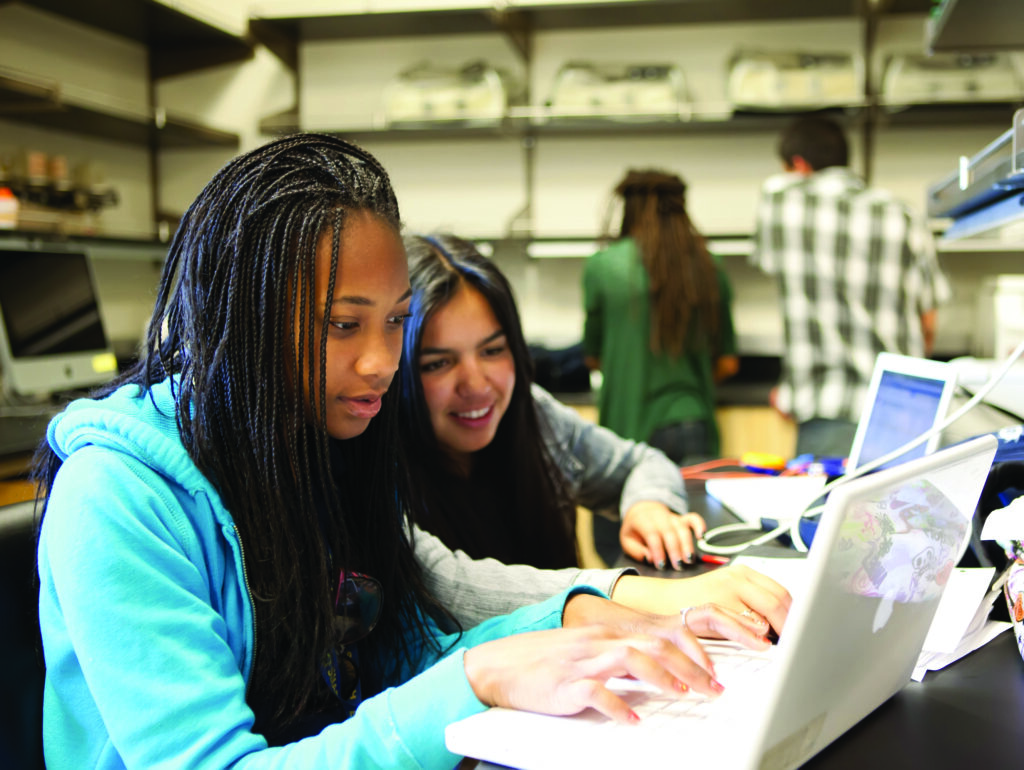See, Think, Wonder

Bloom's Level
Use
Setting
Activity
Technology
Related Strategies
Description
See, Think, Wonder is an inquiry-based learning strategy for analyzing visual media, such as photographs, illustrations, or videos. Students are presented with a visual and asked to take time to observe what they see without interpreting it. After recording their observations, they think about what they see by reflecting on the purpose of the media, what they think is happening, what it means, and why they think the way they do. They make inferences based on their background knowledge and experiences. Finally, students wonder about the media and raise questions that they want to investigate further. See, Think, Wonder requires students to slow down and think critically about visual media before jumping to conclusions. It is often followed by a discussion or sharing of ideas before investigating a topic further.
When To Use It
As a learning strategy, use See, Think, Wonder when you want students to:
- analyze visual media
- make careful observations and thoughtful inferences
- apply background knowledge to interpret visual media
- practice expanding their ideas and providing evidence to support them
- be more aware of their thinking process
As an instructional strategy, use See, Think, Wonder when you want to:
- motivate students to engage in a new topic
- introduce a topic with visual stimuli
- prepare students for deeper discussion or investigation of a related topic
- facilitate deeper, more thoughtful conversations with students
- know what students want to learn more about so that you can tailor lessons to their interests
How To Use It
Advance Prep
- Select a piece of visual media related to a topic or unit of study that lends itself to deep analysis.
- Prepare a See, Think, Wonder graphic organizer or plan to have students make a simple three-column table of their own. Students will use this document to record their responses. There are several templates for See, Think, Wonder available online.
Implementation
- Introduce See, Think, Wonder by explaining to students the purpose of the activity. Explain that students will carefully observe a visual and record what they see without making assumptions about what is happening or what the media is about. Then, they will make inferences based on what they know and have observed to begin interpreting the media. Finally, they will record questions that come to mind based on their observations and inferences.
- Model the strategy using a “think-aloud” to show students what you expect at each stage of See, Think, Wonder. You may use sentence stems such as, “I see…I think…I wonder…”
- After students understand the procedure, display, present, or distribute the visual media for students to examine.
- Distribute copies of the See, Think, Wonder organizer or ask students to record their ideas on their own documents.
- You may lead students through the three stages or have them work independently before reconvening the whole group to share and discuss.
- Allow time for students to observe the visual carefully.
- See: Ask students, “What do you see?” Encourage them to write down or share observations in as much detail as possible. You may want to display a class chart to record student responses at each stage.
- Think: Ask students, “What do you think?” Encourage them to use background knowledge to make inferences about what is happening in the media. Why might this be happening? What is the purpose of this media, and what does it mean? Probe students further and ask them to explain why they think this way.
- Wonder: Ask students, “What do you wonder? What questions does this media raise? What would you like to investigate further?”
- After students have completed each stage, have them share, and record their responses on a whole class chart. Facilitate a discussion about their analysis and ask students to explain their thinking and reasoning.
- Use their questions as a springboard for further investigation or study of the related topic.
Pros
- Stimulates curiosity
- Promotes inquiry
- Makes content more meaningful and engaging to students
- Facilitates self-reflection
- Provides insight into what students are curious about
Cons
- Students with little or no background knowledge may have difficulty making inferences.
Culturally Responsive Application
See, Think, Wonder lends itself well to stimulating discussion related to culturally relevant historical and socio-political themes that are present in different types of visual media. Teachers can choose culturally relevant visual media that helps students make meaningful connections to the concepts and topics they will study. The discussions that follow the See, Think, Wonder activity can expose students to multiple perspectives that may expand their ideas about the upcoming topic and provide a broader lens through which they will engage with the learning material.
Emerging English Language Support
It stimulates curiosity and inquiry through careful observations.
Students with Disabilities Support
It allow students time to thoughtfully consider not only what they’re observing, but also what those observations mean.
Subjects
1.1 Literature, 1.2 Informational texts, 1.4 Writing, 1.5 Speaking and listening, 1.7 Reading in science & technical subjects, 1.8 Reading in history & social studies, 1.9 Writing in history/social studies, science, and technical subjects, 2.1 K-8 mathematics, 2.2 High school number & quantity, 2.3 High school algebra, 2.4 High school functions, 2.5 High school geometry, 2.6 High school statistics & probability, 3.1 Earth and space science, 3.2 Life science, 3.3 Physical science, 3.4 Engineering, technology, and application of science, 4.1 Civics, 4.2 Economics, 4.3 Geography, 4.4 History, 5.5 Impacts of computing
Why It Works
- ABOUT US
- AREAS OF FOCUS
- Equity in CS EducationAdvancing access and equity in K-12 computer science education
- Inclusive Pathways to TechSupporting inclusive and alternative pathways to tech jobs
- Diversifying Entrepreneurship & VCInvesting in gap-closing companies and funds
- Equitable Tech PolicyAdvancing policy, regulation, and accountability to drive systemic change
- PUBLICATIONS
- RESPONSIBLE AI
- RESOURCES